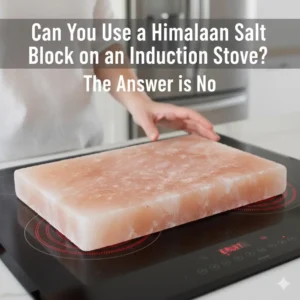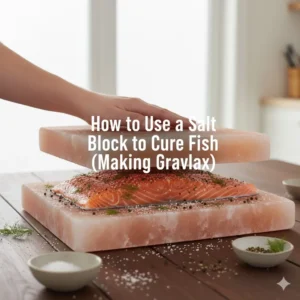Cooking steak on a Himalayan salt block redefines the searing process. Heated to high temperature, the block draws moisture from the meat’s surface, forming a caramelized crust that seals in natural juices and flavor. Unlike a conventional pan, it imparts balanced heat and a gentle mineral salinity that enhances cuts like ribeye or sirloin. This article explains how to preheat the block safely, manage temperature, and achieve a professional-grade sear at home.
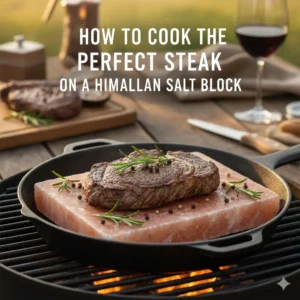
Prerequisites: Tools and Materials
Before searing steak on a Himalayan salt block, assemble the essential tools that ensure safety, temperature control, and precision. Each item supports heat stability and efficient handling, helping you achieve a clean, even crust while protecting the block and your workspace.
| Item | Purpose / Details |
|---|---|
| Himalayan Salt Block | Food-grade pink salt block used for cooking and searing. It draws surface moisture from the steak, lightly seasons the exterior, and helps form a caramelized crust. |
| Steak (e.g., ribeye, New York strip) | Select cuts with visible marbling, such as ribeye or sirloin, for enhanced flavor and tenderness after searing. |
| Tongs or Spatula | Use to safely turn and handle steaks on the heated block without disrupting the crust formation. |
| Heat Source (grill or stovetop burner) | Must reach and maintain approximately 500°F to preheat the salt block gradually, ensuring uniform surface heat and preventing cracking. |
| Paper Towels or Clean Cloth | Pat the steak dry before searing; a moisture-free surface allows faster browning and a crisp crust. |
| Meat Thermometer (optional) | Use to check internal temperature and confirm the desired doneness without cutting into the meat. |
With these tools prepared, you can safely preheat the salt block and achieve the dry, even sear that defines expertly cooked Himalayan salt block steak.
Step-by-Step Guide to Cooking Steak on a Himalayan Salt Block
Step 1: Select the Right Cut of Steak
Choose a well-marbled steak that can handle high heat while remaining tender. Ribeye, New York strip, and sirloin are ideal because their intramuscular fat delivers rich flavor and moisture during searing. Each cut offers a unique texture and depth of beef flavor, but all perform excellently on a salt block.
A thickness of about 1 to 1.5 inches ensures even cooking and prevents the meat from drying out. Thinner cuts sear too quickly and can lose tenderness. Quality selection is the foundation for achieving a crisp crust and juicy interior.
Step 2: Preheat the Himalayan Salt Block Gradually
Preheating correctly determines whether the steak will release cleanly and sear evenly. Place the salt block over medium heat on a grill or stovetop, gradually raising the temperature over 30 to 45 minutes until it reaches approximately 480–500°F.
Rapid heating can cause thermal shock and crack the block. To confirm readiness, sprinkle a few drops of water on the surface—if they sizzle and disappear immediately, the temperature is right. Consistent heat ensures optimal caramelization and flavor development.
Step 3: Prepare the Steak for Searing
Pat the steak thoroughly dry with paper towels to remove surface moisture. A dry exterior enables better browning and prevents steaming. Because the salt block provides natural seasoning, skip additional salt before cooking.
Allow the steak to rest at room temperature for roughly 20 minutes prior to searing. Balancing internal temperature prevents a cold center and ensures uniform doneness when it meets the hot block.
Step 4: Sear the Steak on the Salt Block
Using tongs, place the steak directly onto the heated salt block. The immediate sizzle indicates proper temperature. Sear each side for 2–3 minutes for rare to medium-rare, or 4–5 minutes for a medium-well finish.
Turn the steak only once to allow the Maillard reaction to form a complex, savory crust. The block’s natural ability to extract moisture enhances browning and creates a crisp exterior that standard pans rarely achieve. Limit movement to maintain even color and texture.
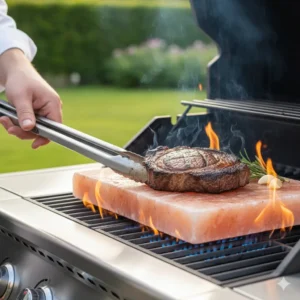
Step 5: Rest the Steak Before Serving
Transfer the steak to a plate and let it rest for 5–7 minutes after searing. This pause allows juices to redistribute, keeping each slice tender and moist. Avoid cutting too soon, as it can release the flavorful juices onto the plate instead of preserving them within the meat.
As the steak rests, residual minerals from the salt block settle and balance evenly across the surface, yielding a perfectly seasoned, succulent result. Once ready, slice and serve immediately to enjoy the full depth of flavor.
Watch a demonstration video here.
Premium Himalayan Salt Blocks for Culinary & Hospitality
Partner with Jilin Ever Creation to source authentic, food-grade pink Himalayan salt blocks designed for grilling, serving, and presentation. Customize dimensions, shapes, packaging, and branding to elevate your product line with mineral-rich materials that meet international safety standards and ship worldwide with flexible order options.
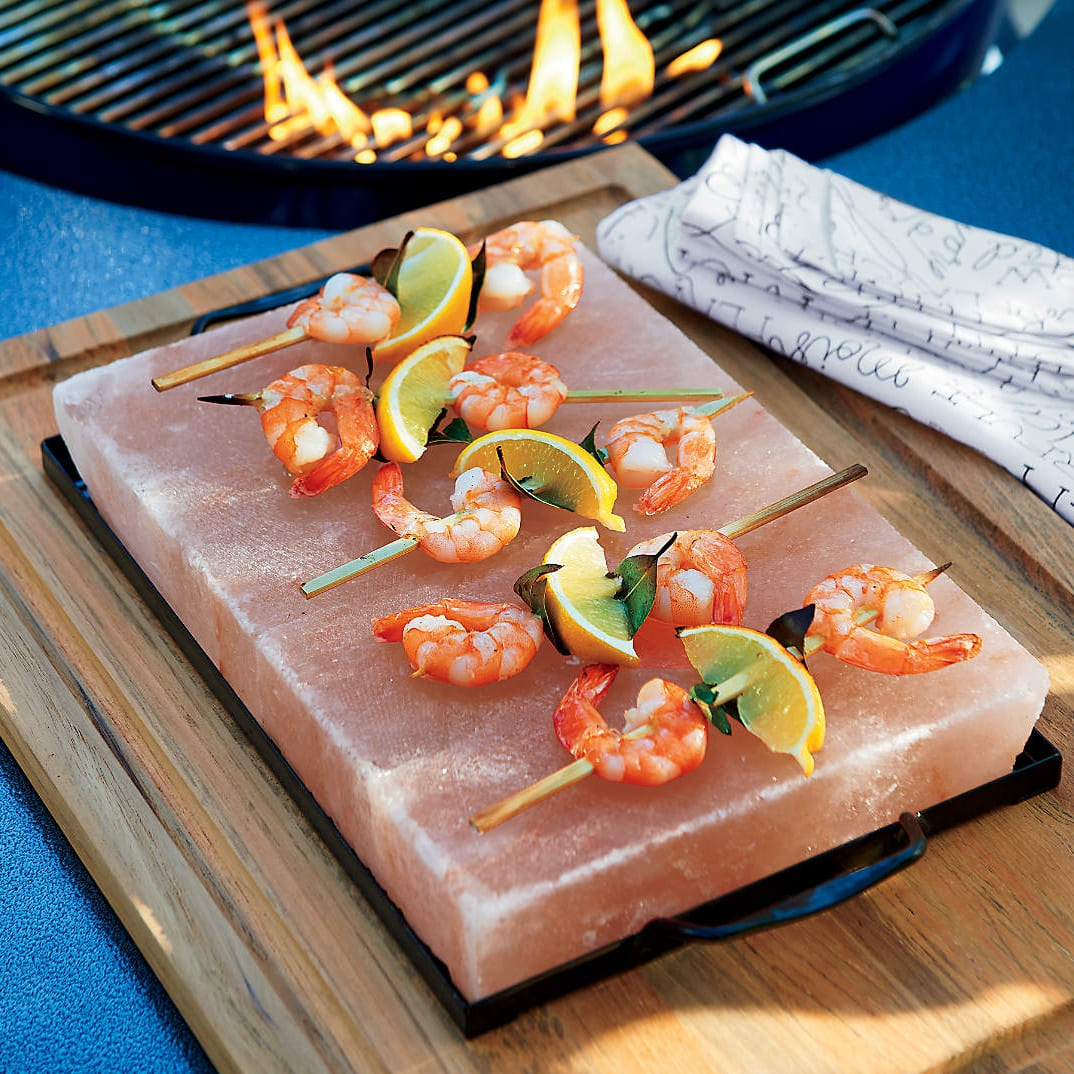
How a Himalayan Salt Block Enhances Flavor and Crust
Cooking steak on a Himalayan salt block changes how flavor develops and crust forms. As the block heats, it extracts surface moisture from the meat, creating the ideal conditions for the Maillard reaction—the chemical process that gives a ribeye or sirloin its deep color and caramelized taste.
Unlike traditional salting, the block releases minerals gradually, enhancing the steak with a balanced salinity that complements its natural richness. Its stable, even heat ensures uniform searing across every side, minimizing the risk of burning or uneven cooking.
This combination of gentle drying, subtle mineral infusion, and steady temperature produces a dense, flavorful crust few conventional pans can match. The block’s mineral composition imparts faint, nuanced notes that elevate each cut—from richly marbled ribeye to lean sirloin—into a more layered and refined experience.
Caring for Your Himalayan Salt Block: Cleaning and Maintenance
Proper care keeps your Himalayan salt block safe for long-term use and maintains its even heat performance. After searing steak or other foods, let the block cool naturally to room temperature. Cleaning while it’s still warm can cause thermal cracking and shorten its lifespan.
Once fully cooled, wipe the surface with a damp cloth or gently brush away any residue. Avoid soap or soaking in water—these dissolve the salt and weaken its structure. For stubborn food particles, use a slightly damp sponge to loosen and lift them without applying excess pressure.
Ensure the block is completely dry before storing it. Residual moisture can lead to mold or surface pitting, so keep it in a cool, dry area with good airflow. When reheating, increase temperature gradually to protect the block’s mineral composition and ensure consistent searing performance for future use.
Frequently Asked Questions About Cooking Steak on Himalayan Salt Blocks
What is the best cut of steak for salt block cooking?
Steaks with a balanced ratio of fat to muscle perform best—ribeye, sirloin, and New York strip are preferred options. They can handle the salt block’s intense heat while developing an even, crisp sear. Leaner cuts such as filet mignon cook faster but generally produce a lighter crust and milder flavor.
Do I need to season the steak with salt beforehand?
No additional salt is necessary. The heated block naturally imparts light, even seasoning during cooking. Adding salt beforehand can result in excessive salinity—opt for freshly ground pepper or herbs if you want to introduce extra aroma or spice.
How do I know when the salt block is hot enough?
Gradually heat the block until its surface reaches about 450–500°F. A few drops of water that sizzle and evaporate instantly indicate the right temperature. Avoid rapid heating, as sudden temperature changes can crack the block. Increase heat slowly over 30 to 45 minutes for the safest results.
How long should I cook the steak on each side?
Typically, sear each side for two to three minutes for medium-rare results. Thicker cuts such as ribeye may need closer to four minutes per side. Flip only once to allow the surface to brown evenly and retain internal moisture for a balanced crust-to-juiciness ratio.
Will the steak absorb too much salt from the block?
A properly heated salt block only imparts a subtle, balanced salinity. Its primary function is to extract surface moisture quickly, promoting an efficient Maillard reaction. This ensures a rich crust and concentrated flavor without the steak becoming overly salty.
Final Thoughts
Cooking steak on a Himalayan salt block redefines both searing and seasoning. The heated salt naturally extracts surface moisture from ribeye, sirloin, or other cuts, producing a rich Maillard crust that seals in flavor. Its subtle, mineral salinity enhances taste while preserving tenderness within the meat.
Once you’ve mastered gradual preheating and temperature control, achieving steakhouse-quality results at home becomes effortless. Always let the meat rest before slicing to retain its juices and ensure an even texture.
After perfecting the basics, experiment with varied cuts or cook complementary vegetables on the same block. Each session refines technique and reveals new layers of flavor in the simplest ingredients.



